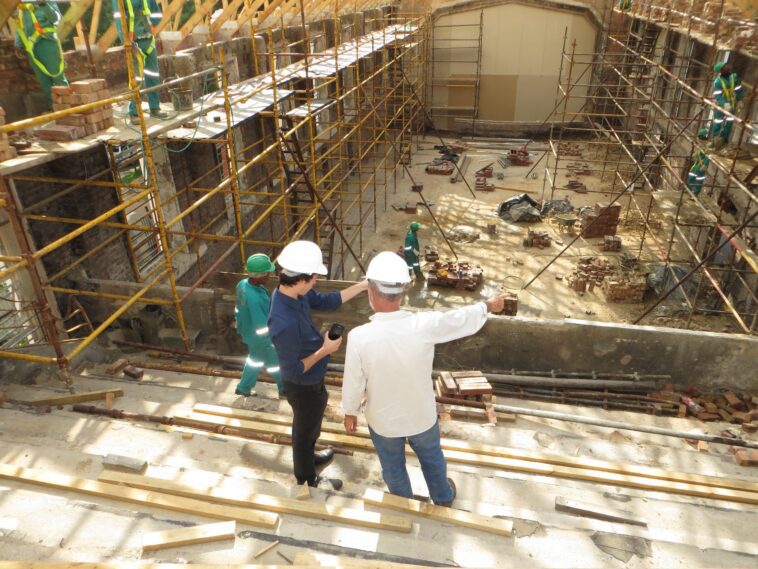From picturesque country cottages to towering skyscrapers, the British landscape is constantly evolving. However, behind the scenes of these architectural marvels lies a critical aspect that can make or break a project: budgeting and cost control.
Keeping control of your finances plays a pivotal role in the successful management of a construction project. Perfecting this skill allows you to maintain financial stability, ensure the viability of your projects, and achieve the desired outcome while working within your allocated budget. Not only that, effective cost control enables the identification and management of potential cost overruns, prevents any unwelcome financial surprises, and helps you to maintain your profitability.
Last but certainly not least, it instils confidence in your stakeholders, enhances project transparency, and builds a solid foundation for long-term success in the construction industry.
Are you keen to put your project budgeting talents to the test and work on perfecting your cost-control measures? If the answer’s a resounding yes, then let’s embark on a journey into the exciting – and sometimes daunting! – realm of project budgeting and cost control to help you with your upcoming construction projects.
The Foundations Of Success – Creating A Robust Budget
Building a successful construction project begins with a solid budget as the cornerstone. Weaving together a range of estimates, financial projections, and market research, project managers must compile a detailed budget that can withstand any challenges or unforeseen circumstances that might arise during the build.
Some of the essential steps involved in drawing up this budget include:
- Setting realistic project objectives and goals.
- Conducting thorough cost estimation and analysis.
- Accounting for contingencies and unexpected costs.
- Seeking expert advice to ensure accuracy.
The Budget Blueprint: Effective Cost Control Strategies
Once you’re armed with a well-crafted budget, it’s time to don your hard hat, roll up your sleeves, and take charge of cost control. Here are some tried-and-trusted strategies that can help construction project managers stay on top of expenses.
- Regular tracking and monitoring: discover the power of diligent tracking, monitoring, and analysis to identify cost discrepancies early on and take corrective action.
- Change order management: navigate the complex terrain of change orders, negotiating with suppliers, and managing scope creep to minimise cost overruns.
- Supplier relations: uncover the secrets of building strong relationships with suppliers, from strategic procurement practices to nurturing long-term partnerships that benefit both parties.
- Value engineering: explore the art of value engineering, where creativity and innovation merge to identify cost-effective alternatives without compromising quality or safety.
- Hire rather than purchase pricey equipment: the specialised equipment, machinery, and digital machine solutions required for construction projects can command eye-watering prices. To cut costs and still ensure you have everything you need for a successful build, you can make the most of plant hire services, such as Flannery, which offers plant hire in London and beyond.

Weathering The Storm – Contingency Planning And Risk Management
In the unpredictable world of construction, storms may brew, challenges may arise, and budgets will be put to the test. That’s why it’s so important to have robust contingency plans in place as well as risk management policies that will help you minimise the chance of any potential dangers or disruptions.
You should consider implementing the following practices:
- Identifying and assessing risks: Conduct a comprehensive risk assessment to identify potential risks and their possible financial impact. Prioritise risks based on their likelihood and severity.
- Contingency planning: Allocate contingency reserves to cover unforeseen events. This kind of financial buffer can absorb any additional costs arising from delays, material price fluctuations, or design changes.
- Regular communication and collaboration: Foster open lines of communication with stakeholders, including contractors, subcontractors, and suppliers. Maintain regular project meetings to address potential risks and cost concerns, and maintain project alignment.
Supplier Management And Procurement Strategies
Strategic supplier management and procurement strategies can significantly impact your project costs. As a result, you might want to consider the following approaches to your next build:
- Supplier selection: Conduct a thorough evaluation of potential suppliers based on their track record, reliability, and pricing competitiveness. You should aim to get multiple quotes to ensure you are getting the best value for your money.
- Negotiation and contract management: Negotiate fair and transparent contracts that clearly define pricing, payment terms, and deliverables. Regularly review and manage your contracts to avoid unexpected cost escalations.
- Material and resource optimisation: Explore opportunities to optimise material usage and resource allocation. Minimise waste, utilise bulk purchasing when feasible, and implement lean construction practices to improve your overall cost efficiency.
Overview
Mastering project budgeting and cost control in construction is akin to creating a symphony where all financial elements harmonise to help you deliver successful projects. By understanding the art of crafting comprehensive budgets, implementing effective cost-control strategies, embracing risk management, and engaging stakeholders, project managers can create extraordinary structures while safeguarding financial stability.
So, put on your steel-toed boots, adjust your hard hat, and get ready for a cost-cutting construction journey that will help you create long-lasting projects – and a profitable future for your business.




